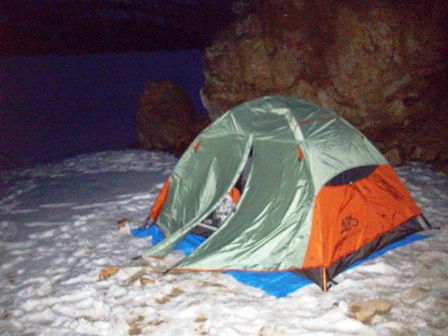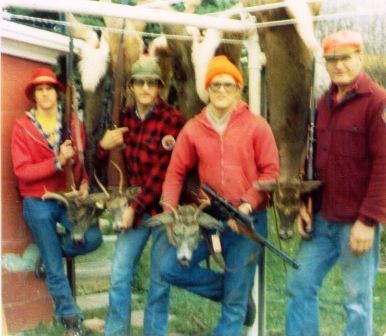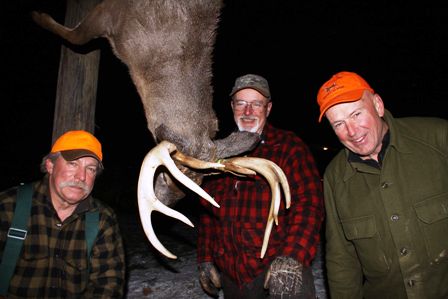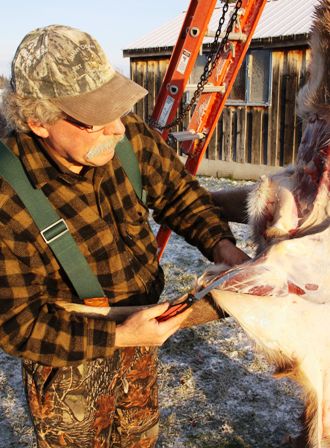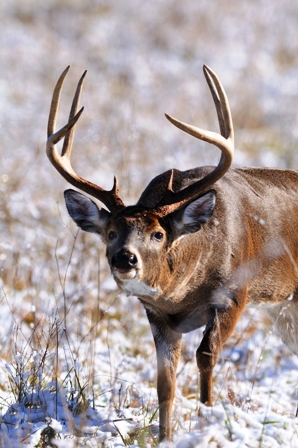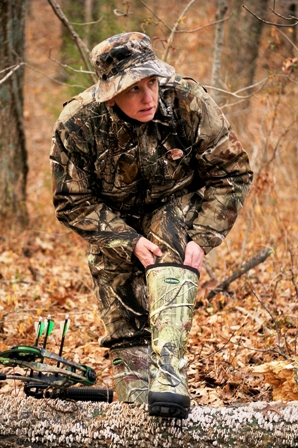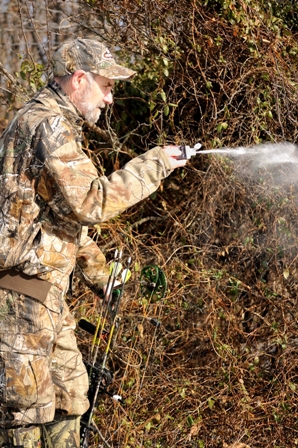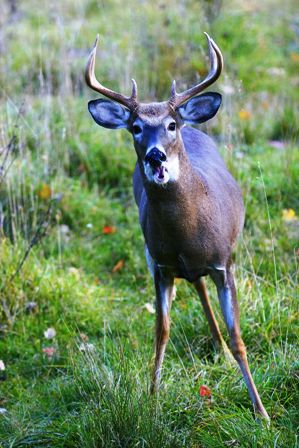By Tom Claycomb III
Essentials for the perfect winter hunt.
As kids, Richard Jaco and I would go camping nearly every weekend. While doing it we engaged in lots of diversions. We’d trap all night or ride around with the game warden hunting deer poachers – then we’d duck hunt at day break. It was great fun except that we didn’t have a tent and my lightweight sleeping bag had a broken zipper.
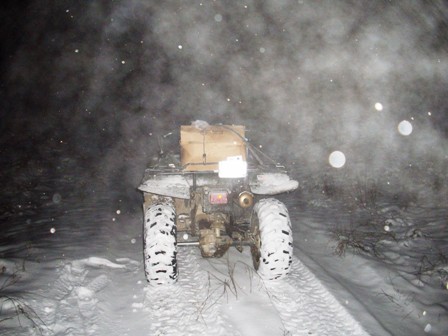
A 4-wheeler is not an essential, but a reliable one can get you to the top of the mountain with less stress and strain, so you can save your energy for hunting, and hunt longer in the evening
before returning to camp.
Those early camping trips probably didn’t teach me much that would help me years later when, on my first bear hunt in Colorado at about 9,500 feet, we had to clear out a foot and a half of snow to set up our tent. Jerome Lawler looked over and asked me where my sleeping pad was. I didn’t even know they made such a thing.
Since those days I’ve learned a lot and have added sleeping pads and more to my camping arsenal. If you’re camping in extreme winter conditions, certain items are must-haves. I don’t know if you can even rate them – they’re all equally important.
In extreme winter camping conditions such as you’ll encounter while elk hunting you have to get a good night sleep to be able to hunt hard. It is the most physical activity that I do all year.
It means getting up well before daylight to eat, and then jumping on a horse, 4-wheeler or hiking to the top of a mountain. It means hiking in mountains all day and stumbling back into camp well after dark. It means slamming down dinner and trying to get some quick shuteye, only to wake up early and do it all again. It’s imperative to get a good night’s sleep. Below are four items that can help you do that:
- A good tent – Don’t buy one of the newer tents that has mesh all the way down the side. This was done to cut cost. You only want a little mesh at the top to allow for air flow. Also look for one with a rain cover that comes down to ground level. Otherwise snow flurries will whip under it and into your tent.
- A good sleeping bag – Get one rated for -20° F, like the Alps Mountaineering Crescent Lake model. Many manufacturers fib on the ratings, so always get one with a lower temp rating than you think you’ll need. Most people favor mummy bags to preserve body heat. A fleece liner will fill in the dead spots, prevent heat from escaping, and increase the heat rating.
- A good sleeping pad – A sleeping pad will protect you from the freezing ground. I love using cots but in cold weather they allow the cold to sweep in from the bottom. Another valuable function that pads provide is they soften the hard ground. I live in the Rocky Mountains. In case you wonder why they’re called “Rocky,” it’s because they’re made up of rocks. Without a good sleeping pad, that prevents a good night’s sleep.
- A tent heater – If you’re sleeping in a sheepherder’s tent (a type of wall tent) then you might be lucky enough to have a wood stove. If not, then there’s nothing like a tent heater. I bought a Coleman tent heater 23 years ago and love it. It puts out 5,000 BTUs. Don’t sleep with it burning or it will asphyxiate you, but I love to fire it up at bed time to heat up the tent so I can strip down, put on my long handles without freezing, and hit the bag warm. Then when I wake up in the morning I sleepily reach out and fire it up. By the time I stumble out of my bag the tent’s warm. If you’re the yuppie type who can’t get along without a bagel, you may try what my buddy Mike Trautner does – he puts his bagel on the heat guard the night before. When he crawls out the bagel’s warm and ready for him to spread on some cream cheese.
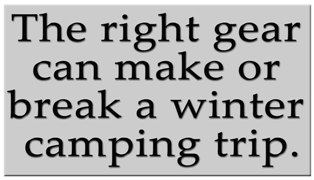 With the above items (the bagel’s not an essential) you should be able to sneak in a good night’s sleep even when the elements are trying to punish you. One last little trick that helps insure a good night’s sleep is to lay a tarp on the tent floor under your sleeping bag and clothes. Curl a ridge along one edge or in the corner, and place wet clothes and boots there to separate them from everything else. That way when the snow melts you will still have a dry tent.
With the above items (the bagel’s not an essential) you should be able to sneak in a good night’s sleep even when the elements are trying to punish you. One last little trick that helps insure a good night’s sleep is to lay a tarp on the tent floor under your sleeping bag and clothes. Curl a ridge along one edge or in the corner, and place wet clothes and boots there to separate them from everything else. That way when the snow melts you will still have a dry tent.
Being outdoors in the winter can be tough duty but it doesn’t mean your only two choices are between dying and being miserable! Be prepared with these four essentials and it will be more fun – plus you’ll be able to hunt harder after a good night’s sleep.
***
Tom lives in Idaho writes outdoor articles for various newspapers, magazines & websites. If it’s something outdoors, he probably likes it. You can read some more of his writings at: www.Amazon.com, www.TomclayComb3.com, and www.BassPro.com.
Click here for more helpful hints by Tom Claycomb III.
And to help you skin your trophy faster and get out of the cold,
don’t forget your Havalon Piranta.
4,827 total views, no views today


